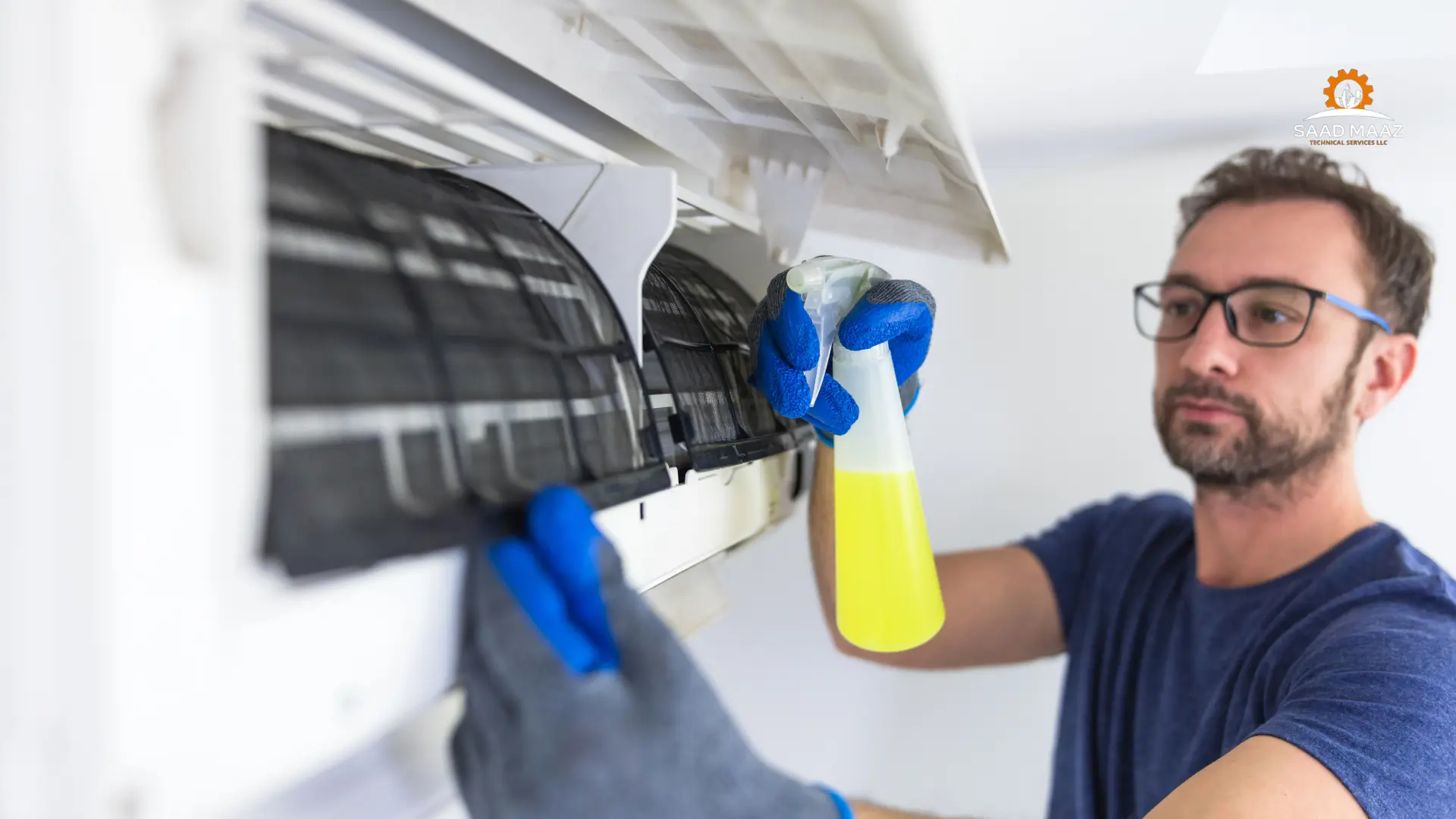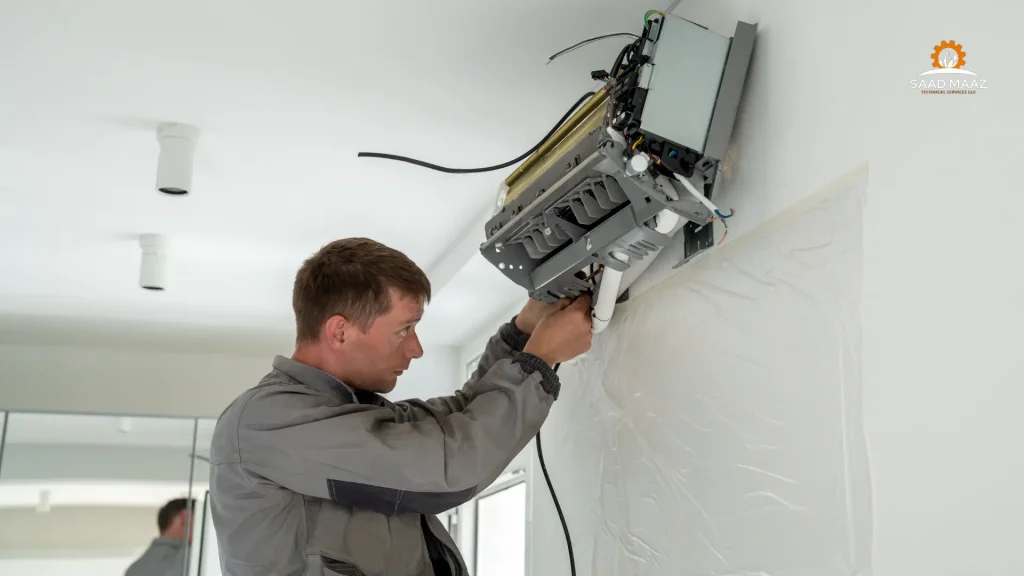
- March 1, 2024
- By admin
- AC Repair Services
Service split AC at home can be a practical way to maintain efficiency and prolong lifespan. While specific tasks may require a professional, many maintenance steps can be performed without a technician. This guide will walk you through the process in detail.

Understanding Your Split AC System
Before beginning any service split ac at home, it’s crucial to understand its components and how they work together. A typical split AC consists of an outdoor unit (condenser) and an indoor unit (evaporator) connected by refrigerant lines. Familiarize yourself with the user manual for specific maintenance guidelines and safety precautions.
Safety First
Safety is paramount when servicing your AC unit. Ensure the power is completely off before starting any work. Use protective gear like gloves and goggles to protect yourself from sharp edges and chemicals. Be aware of the risks involved in handling refrigerants and electrical components.
Cleaning or Replacing Air Filters
The air filters in your indoor unit trap dust, pollen, and other airborne particles. Over time, these filters can become clogged, reducing airflow and efficiency. Cleaning or replacing your air filters every few months can improve air quality and the performance of your AC. Most filters can be easily removed, cleaned with water, and reinserted or replaced if worn out.
Cleaning the Evaporator and Condenser Coils
The evaporator and condenser coils can accumulate dirt over time, impeding heat absorption and release. To clean these coils, gently use a soft brush or a special coil cleaner. For the outdoor unit, remove any debris or leaves that might block airflow around the condenser.
Checking the Refrigerant Level
While checking the refrigerant level usually requires a technician, you can look for signs of leakage or underperformance that might indicate a low refrigerant level. Visible ice on the coils and reduced cooling capacity are common indicators. If you suspect a refrigerant issue, it’s best to call a professional, as handling refrigerant requires special tools and training.
Inspecting and Cleaning the Drain Line
The drain line allows condensation from the indoor unit to exit outside. A clogged drain line can lead to water leakage and increased humidity. You can clean the line by flushing it with water or using a mild bleach solution to prevent algae and mold growth.
Checking Electrical Connections and Controls
Inspect the electrical connections for signs of wear or damage. Tighten any loose connections and replace any frayed wires or components. It’s also a good time to check the thermostat and control system to ensure they work correctly. Any malfunctioning controls should be addressed promptly.
Testing After Servicing
Once you’ve completed the servicing tasks, testing the system is important to ensure everything is working correctly. Turn the power back on and run the system through a cooling cycle. Listen for any unusual noises, and check for proper airflow and cooling. Adjustments may be needed if any issues are discovered during this test.
Regular Maintenance Schedule
Establishing a regular maintenance schedule for your split AC can prevent many issues before they start. Tasks like cleaning air filters and inspecting the units should be done frequently, while more involved checks can be scheduled less often. A maintenance log can help you track what has been done and when future servicing is needed.
When to Call a Professional
While many maintenance tasks can be performed without a technician, there are situations where professional help is needed. This includes handling refrigerants, repairing internal components, and diagnosing complex issues. Don’t hesitate to call a certified technician if you are unsure about any part of the servicing process.
Following this guide, you can effectively service your split AC unit at home, ensuring it runs efficiently and reliably. Regular maintenance improves performance and extends your AC’s lifespan, providing comfort and savings in the long run.
